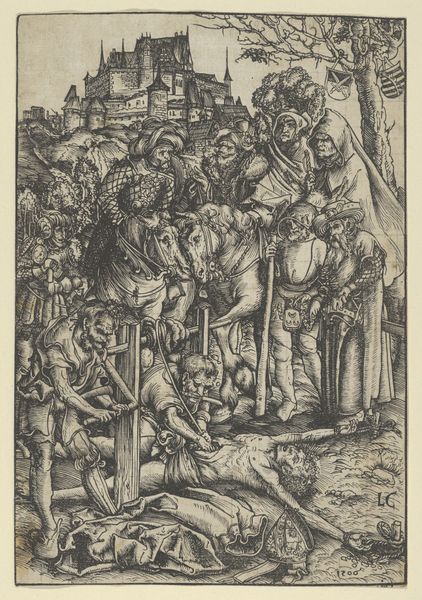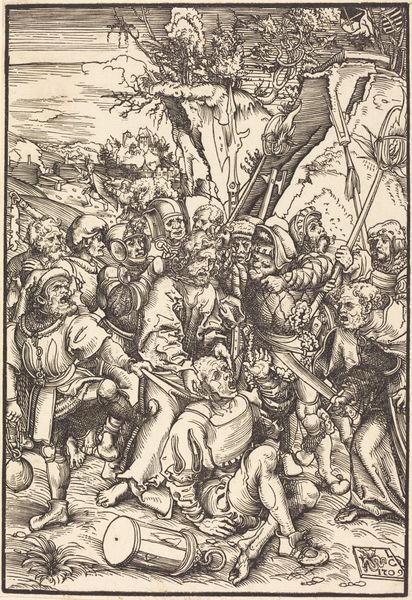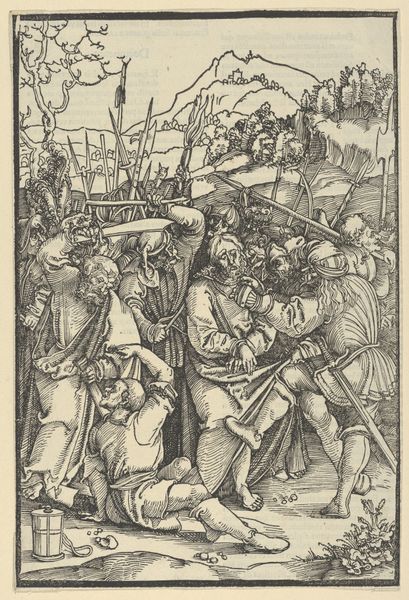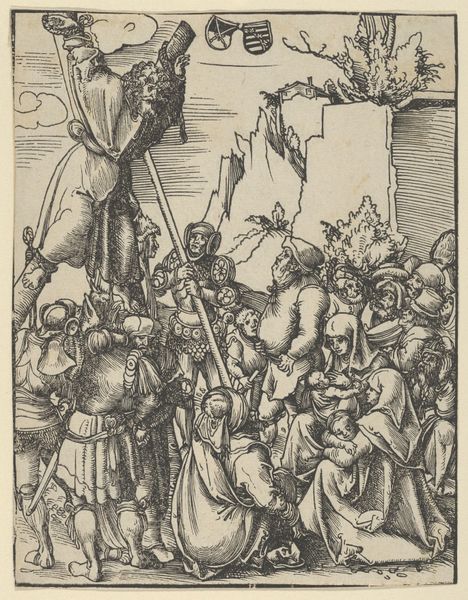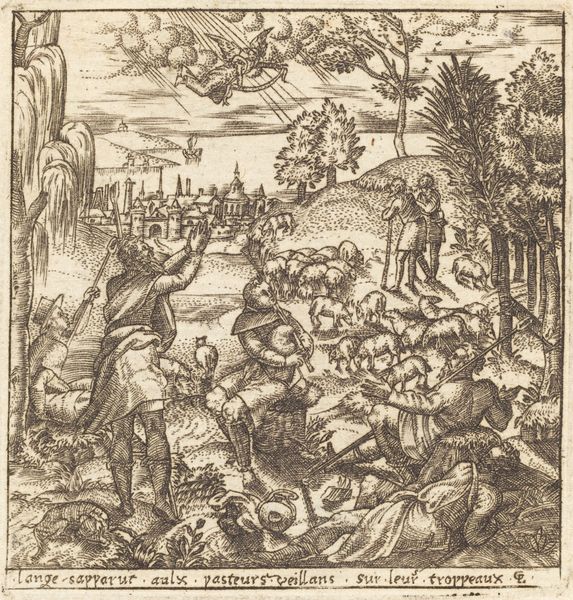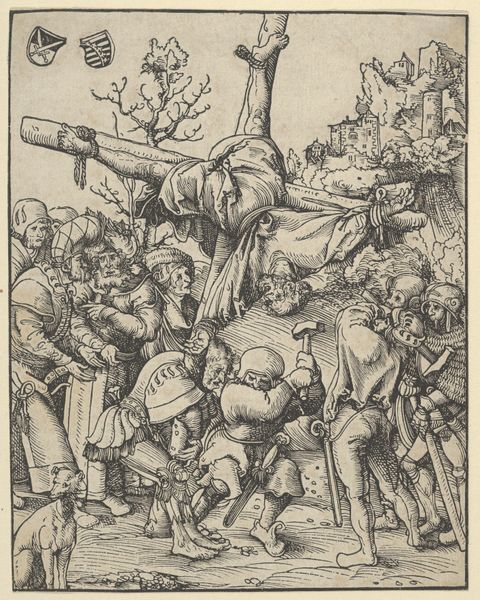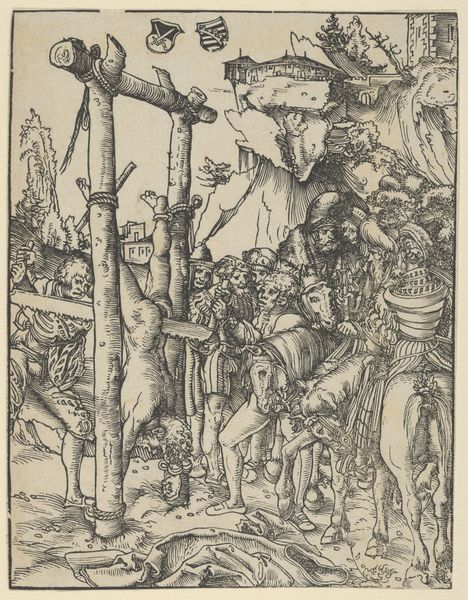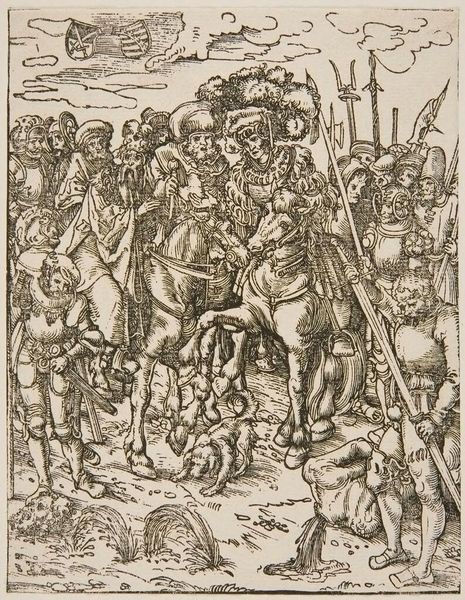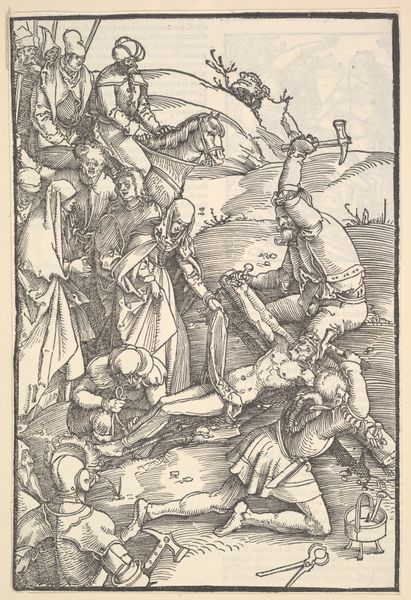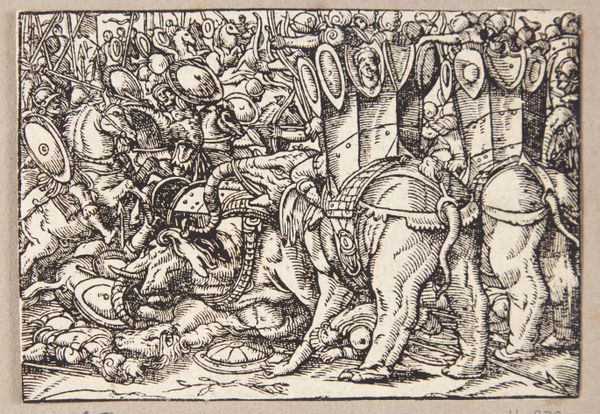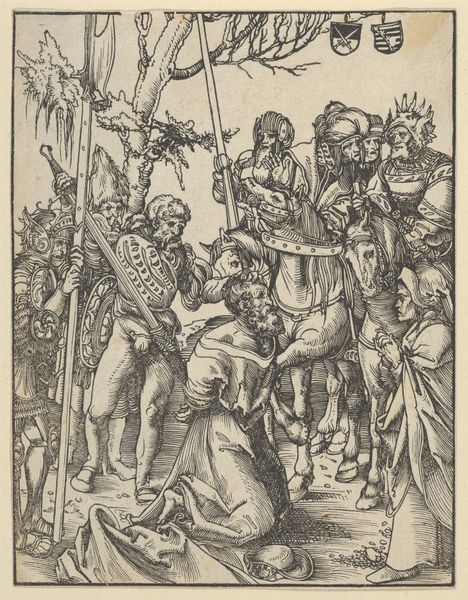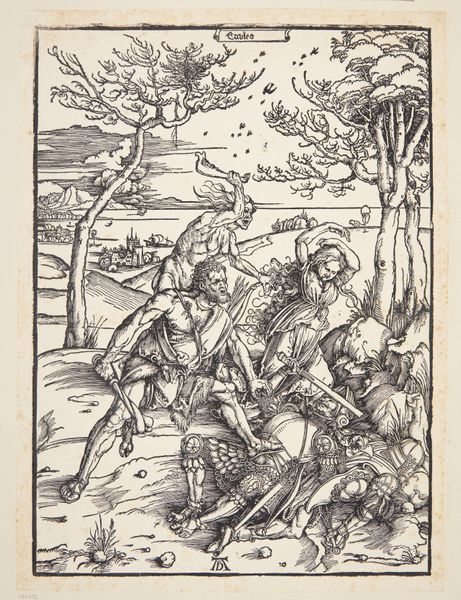
Reverse copy of The Martyrdom of St Paul from The Matyrdom of the Twelve Apostles 1472 - 1553
0:00
0:00
drawing, print
#
drawing
#
comic strip sketch
#
weapon
# print
#
pen illustration
#
pen sketch
#
death
#
dog
#
junji ito style
#
personal sketchbook
#
pen-ink sketch
#
horse
#
men
#
pen work
#
sketchbook drawing
#
sketchbook art
#
doodle art
Dimensions: Sheet: 6 7/16 × 4 15/16 in. (16.3 × 12.6 cm)
Copyright: Public Domain
Curator: At first glance, this image is dominated by detailed linework creating stark contrasts of dark and light, lending an air of brutal, almost frantic energy. Editor: We are looking at "Reverse copy of The Martyrdom of St Paul from The Martyrdom of the Twelve Apostles." It’s attributed to Lucas Cranach the Elder and estimated to be from 1472 to 1553. This print is currently held at the Metropolitan Museum of Art. Curator: Martyrdom...yes, the composition is strikingly unsettling, isn’t it? There’s this imposing procession, figures on horseback, armed men. Below them...bodies scattered and disfigured, giving this piece a clear feeling of cruelty and violence. Editor: Prints such as these were vital tools for disseminating political and religious messages during the Reformation. Cranach was closely linked with Martin Luther, so this depiction needs to be seen in light of the religious and social turmoil of that period. Images were crucial propaganda tools. Curator: The faces are really striking, especially those of the men on horseback. They are all aloof, almost aristocratic—detached from the carnage happening around them. The clear class division feels particularly pointed. Editor: The print would have likely been part of a series and such visual cycles provided accessible narratives for the largely illiterate population. Notice how Cranach utilized clear visual cues—the soldiers' armour, their weaponry— to establish the historical setting and legitimize the religious narrative for a broad audience. Curator: It's compelling to see the expressive potential he found in such restricted formal means: primarily, black ink on white paper. It’s a rather graphic depiction and so detailed, almost excessively so. Editor: Considering Cranach's role in shaping public opinion through art, this work speaks to how imagery served the interests of power—whether religious or secular. Understanding these works moves us closer to revealing the mechanisms behind constructing both faith and history itself. Curator: It's difficult to turn away from the piece’s striking interplay between form and narrative, technique and impact, all those layers working together… Editor: Yes, by interpreting "Reverse copy of The Martyrdom of St Paul", one uncovers many elements about the power of images during times of upheaval and about the fascinating social dynamics and strategies operating beneath such overt displays of faith.
Comments
No comments
Be the first to comment and join the conversation on the ultimate creative platform.
